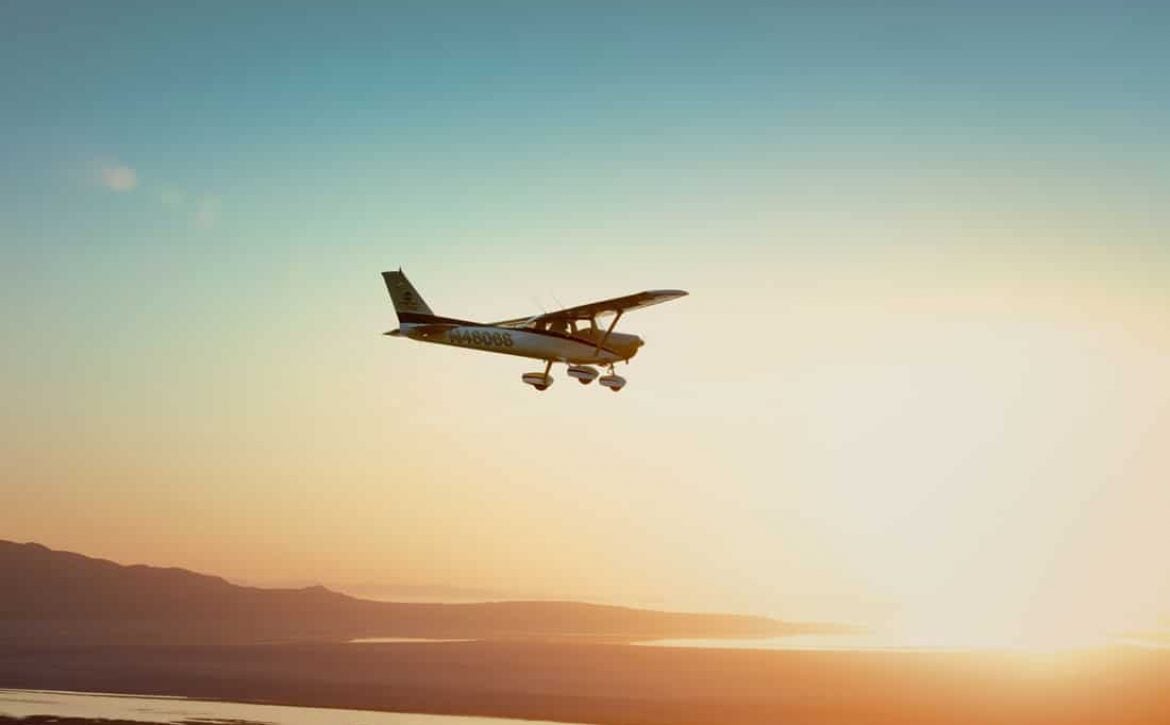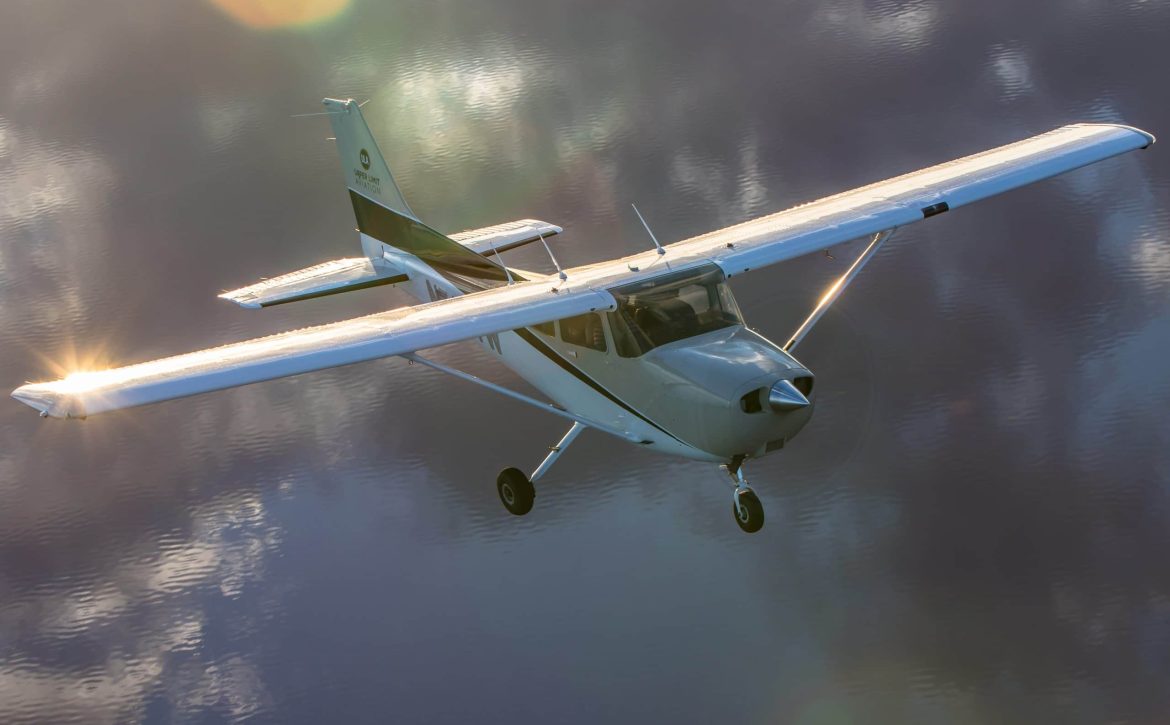Margie O’Connor
Whether just learning to fly or a seasoned aviator, hypoxia does NOT discriminate. It doesn’t care if you have 15 hours of flight time and you’re still aspiring to get your Private Pilot’s License or if you’re a seasoned aviator with 12,000+ hours flying for a major airline. Hypoxia lurks just around the corner, threatening to end your flight (and life) should you fail to recognize the symptoms and respond accordingly.
What Causes Hypoxia?
When the atmosphere we fly in restricts or prevents the efficient transfer of oxygen to our lungs, we are susceptible to hypoxia. Often potentially fatal, the symptoms of hypoxia can slowly creep in so subtlely, even the most discerning pilot may not recognize the onset.
Oxygen (O2) fills roughly 21% of the atmosphere and this percentage doesn’t really change with altitude (the number of O2 molecules decreases with altitude). What does change significantly as you fly higher is the partial pressure of that O2. At Sea Level (SL), your body operates comfortably with a partial pressure of 760mm Hg or 29.92 in Hg. But as begin your ascent, this decreases rapidly with the greatest pressure differential occurring from SL to 5,000 feet. As the partial pressure decreases, the oxygen molecules lose their ability to attach to your hemoglobin (the responsible party for moving O2 through your body). Do you see where this is going? If you guessed an inability to breathe, you are correct. And of course, when we can’t breathe, we eventually lose consciousness and well, you know the end of that flight.
But doesn’t hypoxia always occur at high altitudes? Unfortunately, no. The different types of hypoxia are not only dependent on circumstances (high altitudes being one of them) but also the condition of the pilot. Yes, that’s right, once again, hypoxia does not care if you are a VIP (Very Important Pilot). You may be more susceptible solely because of your particular body chemistry!
You may also think hypoxia only happens in the world of commercial flight. After all, they routinely fly at high altitudes whereas your General Aviation (GA) counterpart tends to stay closer to the terra firma. This too is a potentially dangerous assumption. General aviation has had its share of accidents directly attributable to hypoxia. An accident from 2001 involving a pilot, who climbed to 21,600’ in his non-pressurized airplane without supplemental oxygen, is just one tragic example of a hypoxia-induced crash.
And of course, most are familiar with the loss of pressurization and subsequent crash of the aircraft carrying famous golfer Payne Stewart in 1999. Hypoxia led to the unconsciousness of all on board and their tragic ending. Hypoxia was alive and well in the fatal crash of Helios Flight 522 in 2005 when the crew failed to recognize the lack of pressurization. All 121 persons on board perished as the B737 succumbed to fuel starvation and crashed into the side of a hill.
How do you avoid falling prey to hypoxia? Awareness and recognition of the symptoms of hypoxia are key to avoiding, or, at least being able to respond correctly to the situation.
Stages and Symptoms of Hypoxia
ICDC (which is like ACDC, the band from the 80s) is the acronym I use to remember the stages of hypoxia. The main takeaway here is to be cognizant of your altitude (take a peek at your altimeter) and try to monitor how you feel as you fly. Symptoms indicated below in italics are by no means all-inclusive.
The Indifferent stage starts at the surface and goes to an altitude of 10,000 feet. Degraded night vision is the first indicator of hypoxia, occurring at this level. Why is this, you ask? Well for starters, the eye demands more oxygen than any other organ in the body (yes, really!). And this combined with the lack of color visual acuity because your cones have gone to bed, can create somewhat of a blind situation.
As oxygen saturation continues to decrease between 10,000 and 15,000 feet, you enter the Compensatory stage of hypoxia. Impaired judgment and coordination may occur along with drowsiness, not attributable to boredom. Prolonged exposure at this level may go unnoticed if the crew is busy with other tasks.
Once you pass 15,000 feet and up to 20,000 feet, coordination, speech and flight skills rapidly deteriorate. This is the Disturbance stage. Fatigue, dizziness, and headache surface as your body can no longer compensate for the reduction in oxygen. You may feel a sense of euphoria. Although this sounds like a pleasurable state of being, if you feel euphoric (i.e., like you have suddenly become the happiest and best pilot around and nothing can stop you), you may want to check your pulse oximeter (if you have one) and immediately descend to a lower altitude (if available) because you’re approaching the point of no return.
If you continue ascending without recognizing your symptoms and donning an oxygen mask, you will undoubtedly enter the Critical stage, roughly 3-5 minutes at Flight Level (FL) 200 and above. Your central nervous system begins to die, circulation fails and your heart spools down. Convulsions and unconsciousness are preceded closely by death.
Types of Hypoxia
Hypoxic hypoxia is probably more of a concern to you as a pilot than the other types but all can produce the same debilitating or fatal results. Hypobaric hypoxia (also called Altitude hypoxia) occurs when the partial pressure decreases so much your body can no longer diffuse oxygen and in a nutshell, your body loses the capacity to breathe. So why didn’t you experience symptoms of hypoxia on your recent commercial flight to Florida or some other sunshine-laden state? Because the aircraft was pressurized, which compensates for the lack of partial pressure.
Stagnant hypoxia occurs when circulation of the blood is somehow restricted. Heart conditions, excessive G forces or extremely cold temperatures, all may impede blood flow and decrease it to the point it can no longer deliver O2 to your cells and tissues.
Smoke? Step right up – you may be the perfect candidate for hypemic hypoxia (also called anemic hypoxia), a condition caused by the hemoglobin’s inability to grab onto oxygen molecules. Certain anemic conditions, such as blood loss or non-functioning red blood cells, reduce the hemoglobin’s ability to latch on to oxygen. Or if you do happen to partake in smoking, then you’ve increased your odds dramatically for hypemic hypoxia. Why? Because given the choice between an oxygen molecule and a carbon monoxide molecule, hemoglobin will pick the latter every time.
Suppose you decided to partake in some alcoholic beverages the night prior to flying (of course, you would have quit drinking at least 8 hours prior to comply with the FAR 91.17). After leveling off at an altitude of 4,500 feet, you begin to notice a change in your vision and possibly some discrepancies with your flying abilities. You may have just entered the world of histotoxic hypoxia. This form occurs when your cells fail to process oxygen because of a toxin in the receiving cells (in this case, the toxin being alcohol). Other substances, like narcotics, can also hinder your cells’ ability to absorb oxygen but if you fall into this category, you shouldn’t be flying in the first place.
So how long do you have before incapacitation? Well that all depends on your Time of Useful Consciousness (TUC), which essentially equates to how long you have before you enter the land of the unknown. In a nutshell, your body has a certain amount of time (TUC) to recognize the symptoms of hypoxia and react before your good judgment takes a dive.
Your Susceptibility to Hypoxia is Unique to YOU
The symptoms of hypoxia present themselves differently in each person. A Captain flying for a major airline may experience a reduction in night vision while her First Officer is turning blue. But even though the severity of the symptoms may differ, both pilots are operating with less than a full tank (of oxygen, that is), predisposing them to a continued degradation in piloting skills.
Mental and physical fatigue, alcohol consumption, smoking and being physically out of shape increase your susceptibility to hypoxia.
Your tolerance to hypoxia also depends on external factors. Are you already acclimated to higher altitudes because you routinely fly from an airport with an elevation of 5,000 feet? If so, you may be better able to combat the effects of hypoxia.
Rapid rates of ascent, cold ambient temperatures and the time you spend at the altitude can all decrease your tolerance.
Gaining an Appreciation for Hypoxia
Many will never experience flight at high altitudes in unpressurized conditions. But the geographic location of some flight training facilities, like Upper Limit Aviation, can actually help you acclimate to higher altitudes. If you’re lucky enough to actually fly in the mountains or experience actual hypoxia in a high-altitude chamber, then you’re probably one step closer to recognizing the symptoms, which may just save your life someday.
Awareness is key. Just as knowing your strengths and weaknesses as a pilot help you focus on mastering new skills, so will learning how you react to hypoxia and limiting the factors that exacerbate the condition.
If you find yourself suspecting hypoxia and you are able, descend immediately and declare an emergency. Breathing supplemental oxygen at the required altitudes may also mitigate your chances of developing hypoxia.
Take the plunge (or rather the ascent) in an actual altitude chamber!
For free (yes, that’s right), you can visit and “fly” in an altitude chamber to gain a better understanding of hypoxia, the symptoms of hypoxia, rapid decompression and high altitude flying. The FAA has a chamber in Oklahoma City at the Mike Monroney Aeronautical Center.
Flying a pressurized aircraft and monitoring your O2 level may also help. Or if you were planning to buy an airplane anyway, consider one (like the Piper PA-46 M350) with a built in system that not only measures your level of oxygen saturation (yes, a pulse oximeter and carbon monoxide detectors are built into the panel) but also initiates a descent when a lack of pressurization occurs and pilots fail to respond.
Whatever option you choose, avoiding conditions favorable for hypoxia may lead to many more flights. And after all, isn’t that the ultimate goal?
Happy Flying!
Get Started With Your Flight Training Today
You can get started today by filling out our online application. If you would like more information, you can call us at (844) 435-9338, or click here to start a live chat with us.
References:
National Transportation Safety Board. (2001). 2001 GA Accident Aircraft Data Used in Annual Review. Retrieved from http://www.ntsb.gov/investigations/data/Pages/aviation_stats.aspx
Reinhart, R.O. (2008). Basic Flight Physiology. New York, New York: McGraw Hill.










